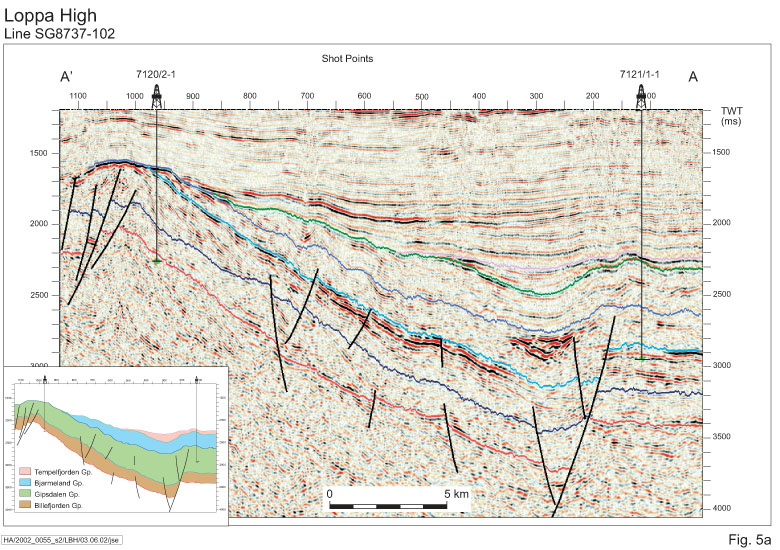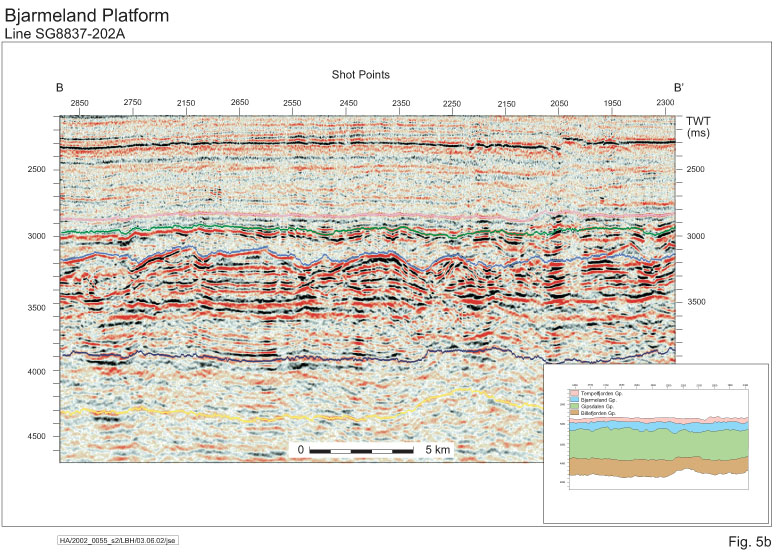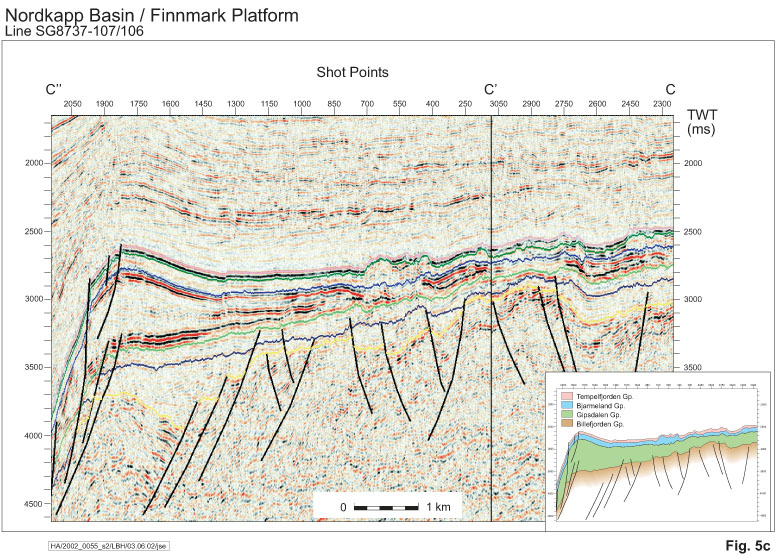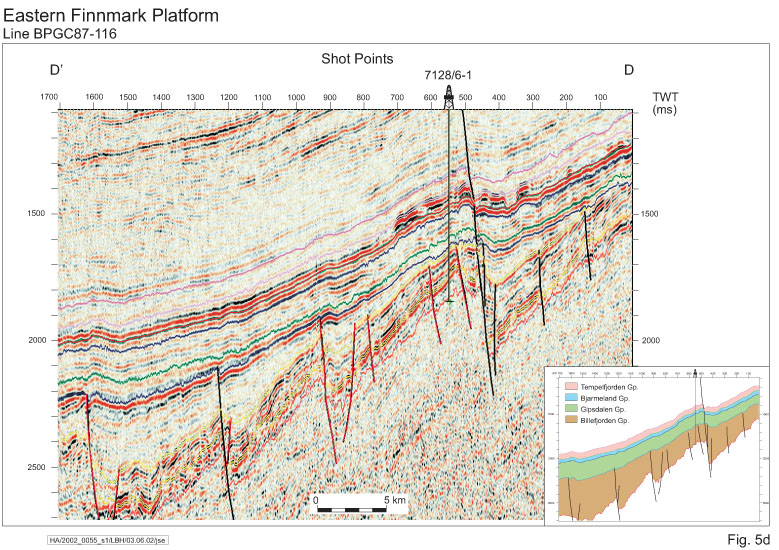Lithostratigraphy
Our proposed lithostratigraphic nomenclature for the Upper Palaeozoic succession in the southern Norwegian Barents Sea is based on studies of 13 exploration wells and 12 IKU shallow cores, combined with relatively good seismic coverage (Fig. 2 & Fig. 5). Recently, important stratigraphic and sedimentological information based on data from the wells have been presented in a series of papers (Bugge et al. 1995; Ehrenberg et al. 1998a, 1998b, 2000, 2001; Stemmerik et al. 1995, 1999; Blendinger et al. 1997; Groves & Wahlman 1997), and a formal lithostratigraphic framework for the offshore areas is needed to avoid nomenclatorial confusion in future publications. So far, different authors have often assigned units and sequences to chronostratigraphic epochs with or without the additional use of varying numerical or alphanumerical schemes (see e.g. Bruce & Toomey 1993; Bugge et al. 1995; Cecchi 1993; Ehrenberg et al. 1998a; Nilsen et al. 1993).
The offshore succession comprises 4 major depositional units, viz. the Billefjorden Group, the Gipsdalen Group, the Bjarmeland Group and the Tempelfjorden Group. Only three groups were originally defined by Cutbill & Challinor (1965) in the time-equivalent onshore successions of Spitsbergen and Bjørnøya, but Dallmann et al. (1999) recognised the presence of Bjarmeland Group representatives on Bjørnøya – viz. the Hambergfjellet Formation. The Billefjorden, Gipsdalen and Tempelfjorden groups represent significantly different major lithostratigraphical units that are easy to recognise both onshore and offshore as their boundaries reflect major shifts in depositional conditions caused by changes in palaeoclimate, basin configuration, drainage patterns, relative sea level and tectonic setting. We believe that the Bjarmeland Group is represented by a major hiatus in most onshore areas of Svalbard – apart, as noted above – from Bjørnøya (Fig. 6).

Seismic images from the Loppa High and the Bjarmeland Platform and from the Finnmark Platform into the Nordkapp Basin illustrate the distinctive regional character of these groups in the southern Norwegian Barents Sea (Fig. 5). The seismic image from the Loppa High (Fig. 5a) shows a regional event truncating the Gipsdalen Group and we believe that this event is the reason why sediments equivalent to the Bjarmeland Group are missing or very thinly developed in the onshore area. The seismic images also give examples of largescale carbonate buildups in the Gipsdalen and the Bjarmeland groups on the Bjarmeland Platform (Fig. 5b). The buildups are all located along older structural highs or show a preference to stack on top of each other. The seismic image from the Finnmark Platform into the Nordkapp Basin (Fig. 5c) illustrates how salt pillows within the Gipsdalen Group have been formed along the margin of the basinal area. Further south on the Finnmark Platform the seismic image (Fig.5d) shows an example of carbonate buildups overlain by spiculites in the Tempelfjorden Group - these appear as seismic anomalies. The seismic images also illustrate the thickness variations in the Billefjorden Group which are strongly controled by Middle-Upper Carboniferous tectonics.
Fig. 5. Seismic images of the Upper Palaeozoic succession in the southern Norwegian
Barents Sea. For location of the sections, see Fig. 2.

5a: Loppa High from its crest eastwards towards the Bjarmeland Platform, showing fault control on sedimentation and reefoid features in both the Gipsdalen and Bjarmeland groups.

5b: Central Bjarmeland Platform, showing an even development of all 4 major units and the reefoid features typical for the Bjarmeland Group.

5c: Northern Finnmark Platform showing half-grabens controlling the Billefjorden Group’s development and dramatic thickening of the Gipsdalen Group (with reefoid buildups) towards the platform margins.

5d: Finnmark Platform, showing half-graben formation affecting the development of the Billefjorden Group - note the marked thickening northwards on the platform.
